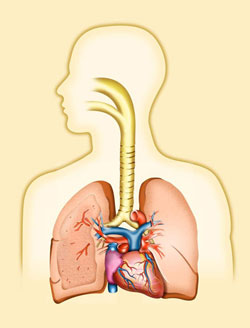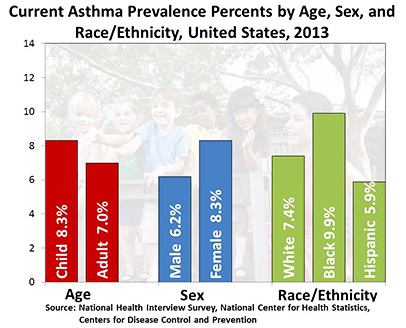What is ozone?
 Ozone is a small molecule made of three oxygen atoms. It is colorless, toxic and has a characteristic smell—that smell experienced when lightning strikes.
Ozone is a small molecule made of three oxygen atoms. It is colorless, toxic and has a characteristic smell—that smell experienced when lightning strikes.
Many people associate ozone with the ozone layer, the layer of molecules in the upper atmosphere that protects us from harmful UV radiation. Indeed, naturally occurring ozone does the Earth a great service by absorbing around 90% all UV radiation. The ozone layer, or stratospheric ozone, has an evil twin named “smog.” Smog is ground-level ozone, and it is a harmful pollutant.
Where does ozone come from?
Ground-level ozone is what’s known as a secondary pollutant. It isn’t released directly into the environment through industrial processes; rather, it is created when hydrocarbons (volatile organic compounds, or VOCs) and nitrogen oxides (NOx) react in the presence of sunlight. This chemical reaction is accelerated by heat.
Smog-forming pollutants come from many different sources, many of come from burning fossil fuels. In urban areas, the juxtaposition of vehicular traffic with power plants and heavy industry can lead to dangerous levels of smog, especially in summer months.
Why should you be worried?
Ozone is a highly reactive chemical, which makes breathing it in dangerous. Inhaled ozone reacts with the organic compounds that make up the tissue lining your respiratory system.  The damage can be likened to sunburn.
The damage can be likened to sunburn.
For healthy individuals, exposure to low levels of ozone can cause chest pain, coughing, shortness of breath, and throat irritation. The effects are uncomfortable, but relatively minor and reversible. Long and repeated exposure may, however, permanently scar lung tissue. There is evidence to suggest that long-term exposure can actually cause new onset asthma.
Health effects can be much more serious for certain individuals. Long-term exposure is not necessary to feel the effects of ozone. According to the EPA, there is clear and consistent evidence that links short-term exposure to ozone with respiratory health effects. Ozone takes people out of school and work and puts in them in the hospital. Short-term ozone exposure is clearly associated with increased asthma medication use in children with asthma, respirator-related hospital admissions, and emergency department visits for COPD and asthma. Studies have also shown an increase in respiratory mortality associated with short-term ozone exposure.
Ozone does not only affect the lungs. There is strong evidence that shows there is likely a causal relationship between short-term ozone exposure and cardiovascular effects and cardiovascular mortality.
According to the American Lung Association there are five groups of people who are at a higher risk when they breathe ozone:
● Children and teens;
● Anyone 65 and older;
● People who work or exercise outdoors;
● People with existing lung diseases, such as asthma and chronic obstructive pulmonary disease (also known as COPD, which includes emphysema and chronic bronchitis);
● People with cardiovascular disease.
The risk for children and teens is primarily due to their developing respiratory tissue, but they are also at an increased risk for asthma and spend more time outdoors during ozone season.

Ozone concentration peaks in the heat of the afternoon, in the hours of 1-6 pm. Freeways in urban areas, particularly during afternoon rush hours, will have the highest smog and particle pollution levels. While daily exercise is a crucial part of a healthy lifestyle, on high ozone days, it can be better to stay inside during these times and avoid the unhealthy levels.
Air pollution is a discriminating problem. As reported by the American Lung Association: “Poorer people and some racial and ethnic groups are among those who often face higher exposure to pollutants and who may experience greater responses to such pollution.” In addition to being more likely to live in counties with higher ozone pollution, African Americans are at a higher risk for asthma. African American children have asthma at a rate of nearly two times that of white children.
Ozone Action Days
TCEQ declares these when weather and pollution conditions that can produce high levels of smog are predicted. People and businesses are asked to take action on these days by reducing auto emissions, conserving energy, and limiting the use of aerosols. Sign up for Action Day alerts with TCEQ.
What is the ozone standard?
Ozone is one of six principle pollutants for which the EPA has established National Ambient Air Quality Standards (NAAQS). These standards establish limits on the concentrations of these pollutants in our atmosphere.
The NAAQS for ozone is currently 0.075 parts per million (or ppm). The standard can also be referenced in parts per billion (ppb – 75 ppb would be the current standard). New standards were proposed December 14, 2014. The EPA asked the public to weigh in on a lower standard, specifically requesting comment as to whether the new standard should be as low as 0.060 ppm aThe new standard should be announced by October 1.
What’s the right number?
The current ozone standard of 75 ppb is not scientific. The concentration is not a bar separating harmful and safe levels. It is simply a Bush-era political compromise chosen against the unanimous advice of 25 scientists on the EPA ozone panel of no higher than 70 ppb. Now, scientific consensus favors even lower standards. Citing current research, most medical associations and public health organizations endorse a standard of 60 ppb. Check here for more on the politics of this debate.
The EPA published an Integrated Science Assessment—a lengthy summary and analysis of current research—for ozone in early 2013. According to the report, recent testing shows that inflammatory responses and respiratory symptoms are affected by concentrations between 60 and 70 ppb.
Sierra Club and Beyond Coal have been campaigning to lower the standards. “Modeling of smog pollution health effects looking at 12 cities across the country showed that lowering the acceptable level of smog to 60 parts per billion would save 4 to 5 times as many lives as 70 parts per billion.”
Unfortunately, many cities in Texas don’t even meet current standards. You can look up your county’s ozone score at the American Lung Association’s website, but if you live in a big city in Texas, chances are your county has a failing grade. Still, the standards need to be lowered, and industries need to be held accountable for protecting the public from harmful levels of smog. The EPA has the authority and the responsibility through the Clean Air Act to lower the ozone standard to a concentration that strong evidence shows will protect public health.